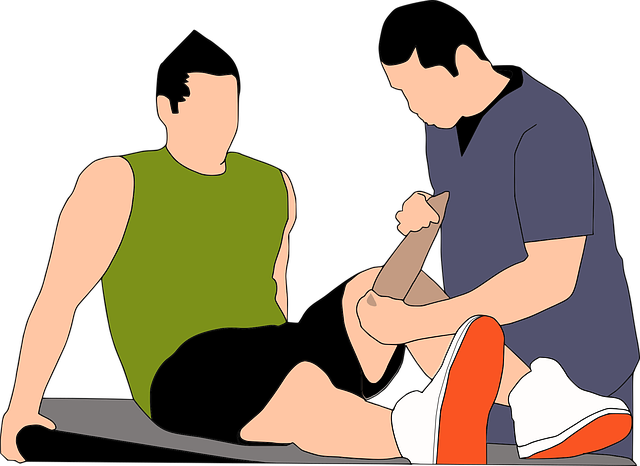
Image Source: Pixabay
Injuries are a part of the game and sometimes, athletes face themselves with a number of different injuries that can significantly impact their performance. One such injury is a sports hernia which can sideline an athlete for roughly 6 to 12 weeks depending on the severity of the injury. Physical therapists are looking for ways to accelerate the rehabilitation process of their athletes and it appears that traditional Chinese medicine helps achieve this goal. This ancient method of healthcare focuses on natural healing techniques that supposedly aides certain ailments and conditions. TCM hails from China and was developed more than 2,000 years ago.
Many Western countries are starting to adapt to traditional Chinese, especially in the sports industry. Here we’ll be discussing how sports hernias are treated with Chinese medicine and how it benefits athletes in terms of performance and recovery.
What is a sports hernia?
A sports hernia (athletic pubalgia in medical terms) is an injury in the lower groin where the tendons attached to the pelvis are strained or torn. Diagnosis of the injury is through physical examination where the person’s range of motion in the pelvic area is tested. If the pain is evident, the person has a sports hernia.
This injury is commonly seen in high impact sports such as rugby, soccer, and football. Extreme twisting of the lower body and planting the feet explosively on the ground are the main causes of sports hernias. There are a number of different ways to treat a sports hernia depending on how severe the injury is. If the tissues are strained, physical therapy and rest should suffice. But if the tendons are torn, surgery may be required.
How Chinese medicine is used to treat sports hernias
Chinese medicine is often combined with physiotherapy to help promote increased rehabilitation speeds in injured athletes. TCM may also be introduced to facilitate post-surgery recovery if the injury is quite severe. One of the main benefits of TCM is that its high patient compliant (mainly because how the immediate improvements in their symptoms) which means athletes can return to playing within the given timetable.
Other benefits of traditional medicine include:
- Pain management
- Stress relief
- Reduced fatigue
- Improved sleep
- Decreased dependence on medications
There are a number of different TCM therapies that practitioners use to treat athletes with injuries. The three main ones are acupuncture, cupping, and herbal medicine. When used together, it forms a powerful healing mechanism inside the body which helps reduce pain, improve hormonal balance, and decrease fatigue levels. Let’s take a look at how each of these treatments works to help aide sports hernias.
Acupuncture treatment
Acupuncture is one of the most popular forms of TCM and is widely practiced across many Western nations. It’s a system of integrative medicine that involves pricking the skin with thin needles to help alleviate pain. Very little can be done locally when soft tissue is inflamed. Acupuncture solves this by treating the pain away from the inflamed area which decreases the likelihood of aggravating the injury.
Acupuncture treatment is effective in treating pain associated with sports hernias and the results are quite immediate. Many athletes often have acupuncture treatments to reduce muscle fatigue and increase recovery speeds to help maintain peak performance. When the needles are inserted into the acupuncture points, the nerves, connective tissue, and muscles are stimulated. The stimulation promotes increased blood flow and triggers the body’s natural painkillers to provide pain relief from sports-related injuries.
Cupping therapy
Another popular form of alternative medicine is cupping therapy. If you look back at the 2016 Olympics, many athletes were spotted with bright red circles on their backs. This means that top-level athletes rely on cupping therapy to reduce muscle fatigue and promote natural healing. Cupping therapy works by placing suction cups on different parts of the body.
The capillaries expand and increase the amount of fluid entering and exiting the tissues which mean increased blood flow and decreased stress levels which are essential for optimum recovery. Cupping is also helpful after exercise to help eliminate waste products from the muscles. This helps replenish the muscles with vital nutrients and oxygen to help relieve pain after a workout.
Chinese herbal medicine
The use of herbal therapy encompasses ancient practices that rely on natural forms of healing to alleviate the body from a variety of ailments. Chinese herbal medicine draws the regenerative properties of plants and herbs to promote better recovery for athletes with a sports hernia. Therapy begins by gently massaging the affected areas to provide temporary relief from muscle soreness, cramps, and sprains. Chinese herbal medicines come in many different forms like salves, ointments, powders, and even pills. TCM practitioners first identify a patient’s symptoms before creating a formula to help aid the condition. Once the formula is created, they apply herbal medicine to the affected areas to reduce pain and discomfort. The great thing about using Chinese herbal medicines is that there are little to no side effects because of its natural properties. This means athletes can recover faster when physiotherapy is combined with herbal medicine.
Conclusion
Traditional Chinese medicine emphasizes holistic healthcare methods to facilitate rehabilitation speeds in athletes with sports hernias. The powerful healing capabilities of these alternative medicines work in tandem with physiotherapy to ensure a full recovery in injured athletes. It’s a complementary healthcare system that works best when used with other proven treatments to maximize its healing properties.
About The Author:
Daniel Lummis, Marketing Consultant at Baolin Acupuncture & Chinese Medicine. Baolin Acupuncture & Chinese Medicine are providers of Acupuncture and Traditional Chinese Medicine services in Perth Australia. Their practitioners have been serving people in Australia since 2003.




